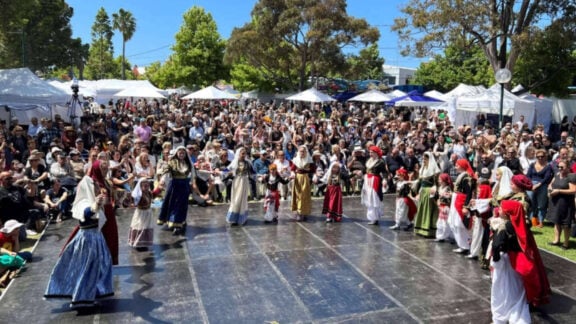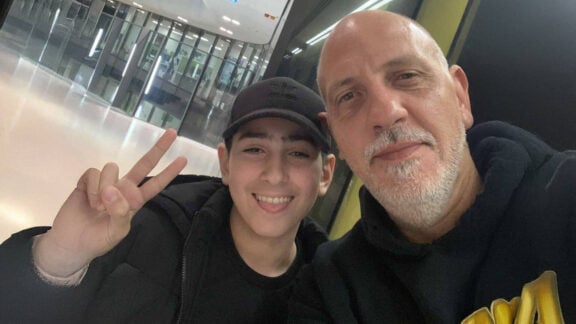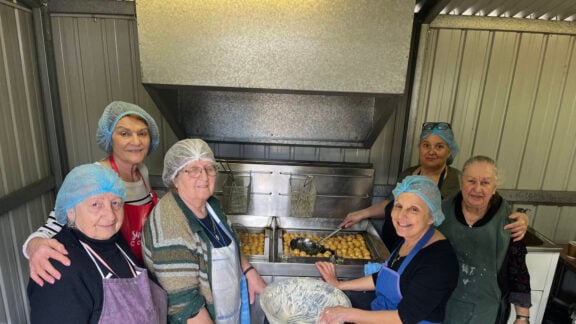The Hellenic Museum’s most recent exhibition, Rituals: Gifts for the Gods, is not merely a curated display of antiquities, but a contemplative pilgrimage through the spiritual psyche of the ancient Greek world. It is an eloquent testament to the sacral imagination of a civilisation that perceived the divine not as an abstraction relegated to distant heavens, but as a living, breathing presence interwoven with every facet of mortal existence. With unerring precision and deep cultural empathy, the exhibition maps the arc of ritual practice from the Minoan epoch to the Hellenistic age, revealing not the detritus of a bygone religiosity, but the luminous thread that binds the ancient with the modern, the sacred with the secular, the individual with the cosmos.
What emerges is a vision of ritual not as a fossilised rite or performative gesture, but as a sacred grammar through which the ancients negotiated their place in an ordered yet mysterious universe. Each artefact, each fragment of votive expression, is imbued with the breath of supplication, the tremor of fear, the serenity of faith. As Sarah Craig, the Hellenic Museum’s visionary CEO, affirms, the exhibition compels us to recognise that the yearning for ritual is not a culturally bounded phenomenon, but a deep-seated human instinct: one that transcends ethnicity and epoch, and invites us into the shared sanctity of human experience.
In the Greek cosmos, the sacred was not encountered solely within the columned grandeur of temples or the solemnity of public festival. It was born in the flicker of a household flame, in the whispered prayer, in the libation poured to unseen presences at the crossroads. Ritual was the breath of life itself: a sacred choreography through which order was sustained and chaos transfigured. This exhibition renders visible that metaphysical intimacy: the conviction that the gods dwelled not apart from the world, but within its very substance, within the home, the grove, the city, and the body.
The visitor is drawn first into the world of the Minoans, where divinity was encountered through the fecund rhythms of nature. Here, ritual was an invocation of renewal, inscribed upon the earth itself: performed in subterranean caves and lofty peak sanctuaries, in open-air altars and labyrinthine palatial courts. The divine was female, serpentine, vegetal, and cyclical: manifest in priestess and bull, in double axe and spiral. It was a vision of sacred continuity that enfolded life, death, and rebirth into a single, sacred breath.
As one moves through the Mycenaean and Archaic landscapes and into the Classical period, the divine order expands in splendour and complexity. The Olympian deities assume their majestic thrones, and the cultic apparatus of the polis rises with solemn beauty. Yet the exhibition, in its profound insight, does not linger on the splendour of processions or the magnitude of temples. Instead, it draws our gaze to the votive: small, intimate, and often crude, where the true pulse of faith is felt. These are the artefacts of the common soul, whispered into clay or marble with trembling hands, left in the sacred precinct as silent appeals for mercy, for healing, for hope.
These votive offerings, in the form of figurines, libation vessels and inscribed tablets, speak with quiet eloquence of a society in which the sacred was not removed from the pain and joy of the flesh, but was responsive to it. Each object represents not merely a transaction with the divine, but a revelation of the inner topography of the devotee: the longing, the vulnerability, the recognition of forces beyond human ken. Here, ritual becomes not only an act of reverence, but also, of self-disclosure.
Among the most affecting are the anatomical votive: terracotta and stone effigies of limbs, eyes, breasts and other body parts, dedicated to Asklepios, the god of healing. These votives bear witness to a theology of suffering and restoration, to a sacred economy wherein pain is transmuted through ritual into meaning and grace. They are at once acts of beseeching and proclamation, tokens of affliction and testaments of deliverance. Their mute, fragmentary forms speak volumes about the human desire not only to be healed, but to sanctify suffering, to place it in relation to the divine.
It is in these offerings that the most startling continuum is revealed, one that spans millennia without interruption. For these anatomical votives, far from relics of a vanished age, find their modern analogue in the τάματα still lovingly placed before icons in Orthodox churches today. Crafted from silver or tin, these contemporary ex-votos, depicting eyes, limbs, infants, or entire human figures, are identical in function and intention to those of antiquity. They are prayers made flesh, expressions of a faith that refuses to fade. The exhibition thus permits the viewer who is aware of both traditions to make a connection that will facilitate them beholding an unbroken line of devotional expression that transcends Time itself.
This juxtaposition is not merely aesthetic. It reveals both the stubborn durability of ritual form, and the capacity of sacred gesture to adapt and endure across seismic shifts in theology, polity, and cosmology. In these artefacts, one perceives that ritual is not the province of dogma, but of the human spirit itself, a vessel for the eternal needs of hope, gratitude, and connection. The shape changes; the impulse remains.
As an exhibition, “Rituals” is also attuned to the public dimensions of ritual in its civic, social, and psychological roles. In ancient Greece, rituals were the fabric from which society was woven. Festivals such as the Panathenaia or the Dionysia were more than acts of collective worship: they were affirmations of civic identity, instruments of cultural memory, and mechanisms of intergenerational transmission. Through such rituals, citizens participated in the mythic past and affirmed their place in the communal order.
A reconstructed domestic altar featured in the exhibition speaks powerfully to the intimate spaces in which sacred time unfolded. It gestures to the often-overlooked agency of women in sustaining ritual life within the oikos: tending to hearth deities, guiding children through rites of passage, and honouring the dead. In these quiet, private spaces, ritual was no less potent; it was the axis upon which the rhythm of family and cosmos turned.
Equally, ritual served as a balm in times of existential uncertainty. In moments of illness, transition, or misfortune, the Greeks of old did not turn inward, but outward: toward ritual gestures that transfigured fear into supplication, chaos into cosmos. Purification rites, oracular consultations, and sacrificial offerings constituted a symbolic architecture through which the inscrutable could be rendered bearable. Ritual, in this context, was not ceremony: it was salvation. Those of us for with transplanted memories and experiences of our ancestral villages will instinctively sympathise and understand.
What the exhibition ultimately reveals is that ritual is not a cultural embellishment but an ontological necessity. It arises from the human compulsion to order experience, to locate suffering within a moral and metaphysical framework, to enact the sacred in the midst of the profane. It is through ritual that we come to terms with finitude, with longing, with the mystery that undergirds existence itself.
Thus, Rituals: Gifts for the Gods surpasses its immediate thematic remit to articulate a broader, more urgent truth: that ritual is the foundation upon which all cultures, all identities, all human communities rest. As Sarah Craig observes, the exhibition is not an insular act of cultural self-regard, but a gesture of inclusion; a bridge between times, peoples, and faiths. In a world beset by fragmentation, alienation, and dislocation, the exhibition offers a luminous counterpoint: a vision of continuity, of shared humanity, and of transcendent connection.
It is within this expansive humanistic vision that the Hellenic Museum finds its highest purpose. It is not a mausoleum of antiquity, but a crucible of dialogue, a sacred space where the legacy of Hellenism is neither fossilised nor fetishised, but interrogated, reimagined, and made relevant to the living concerns of the present. Through exhibitions such as “Rituals”, the Museum offers the Greek diaspora and the populace at large, the opportunity to situate themselves within the continuum of a civilisation whose rituals, though ancient, remain urgently contemporary.
For those of us living at the confluence of memory and migration, Rituals: Gifts for the Gods becomes something more than an academic exercise. It becomes a mirror through which we glimpse ourselves: fractured, searching, and yearning for meaning. It invites us to retrieve what has been forgotten, to name what has been unspoken, to craft out of fragments a coherent self, or at least, to recognise those fragments, disparate and often unintelligible as part of a multi0faceted and infinitely complex whole. In this sacred encounter between artefact and identity, the Hellenic Museum performs its most vital work: enabling us to reconstitute our place in the world, not as displaced inheritors of a fading tradition, but as conscious participants in a living, breathing cultural ethos.
In summoning the sacred past into the present moment, the exhibition reminds us that we are never severed from our origins: that the gods we honour, the invocations we intone, the rituals we perform, endure within us, awaiting remembrance. And in remembering, we become whole.









